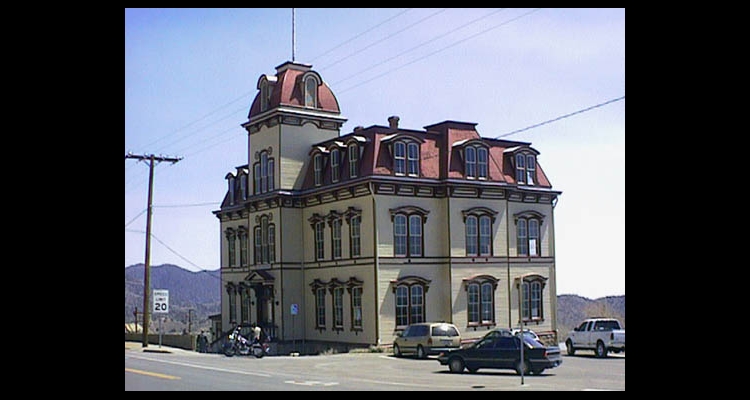Historic Fourth Ward School
When it debuted in 1876, journalists called Virginia City's new Fourth Ward School the community's "Pride and Glory," the finest of its kind on the West Coast. Architect C. M. Bennett selected an architectural pattern in the popular French-inspired Second Empire style. With its distinctive Mansard roof, the elegant Victorian structure dominated the south end of C Street, the Comstock's main thoroughfare.
Designed to accommodate over one thousand students, the state-of-the-art edifice featured a modern heating and ventilation system, interior flush toilets, drinking fountains, and single desks for each scholar. Ahead of its time, the Fourth Ward reached another milestone in 1878 when its High School Department was the first in Nevada to award diplomas for successful completion of nine grades. By 1909, the Fourth Ward had added all twelve grades. Hundreds of graduates became fixtures in Nevada society, providing leadership for a new state while always looking back on the school with fondness.
As Virginia City's population declined, the enormous building grew increasingly obsolete, and the Fourth Ward School closed its doors in 1936. Abandoned to the elements, the structure deteriorated for three decades. Because most school districts demolish older schools to reuse real estate for new construction, the Fourth Ward became an anachronism. It is likely to be the only Second Empire school of its scale to survive in the nation.
Rehabilitation efforts began in the 1960s, and in 1986, the Fourth Ward reopened as a museum featuring an interpretive center. After extensive restoration, including support from the White House Millennium Project and the Nevada Commission for Cultural Affairs, the Fourth Ward School Museum showcases modern techniques in preservation and adaptive reuse. The exquisite restoration has made space on three floors available for exhibits and functions. The Wiegand Room is particularly remarkable for its pocket doors that can either separate two rooms or open to create a large auditorium.
The Fourth Ward School Museum has tens of thousands of visitors annually, and its staff especially welcomes the many students who visit the facility to understand school life in another century.
Article Locations
Related Articles
None at this time.
Further Reading
None at this time.


